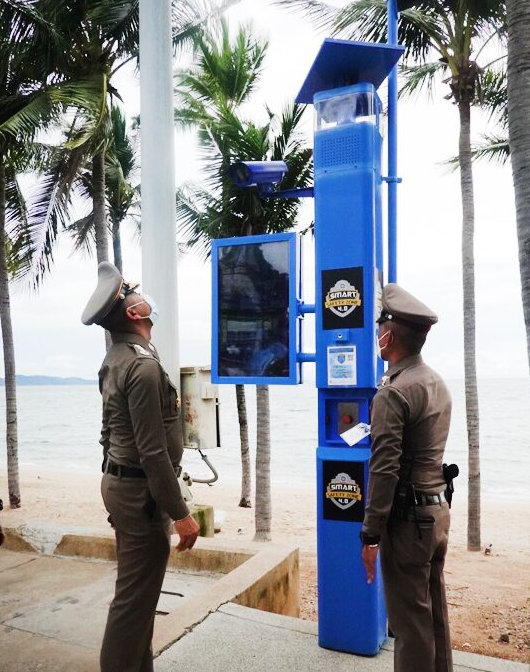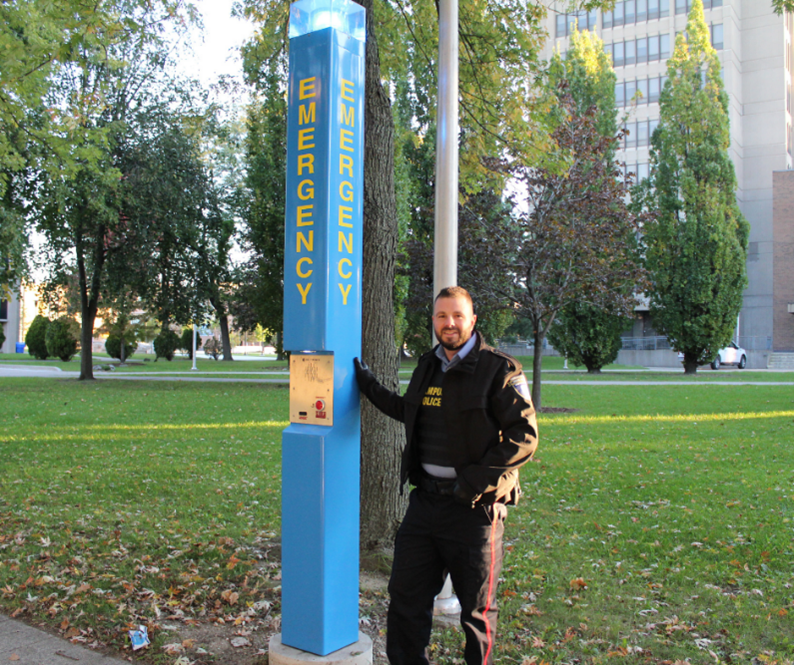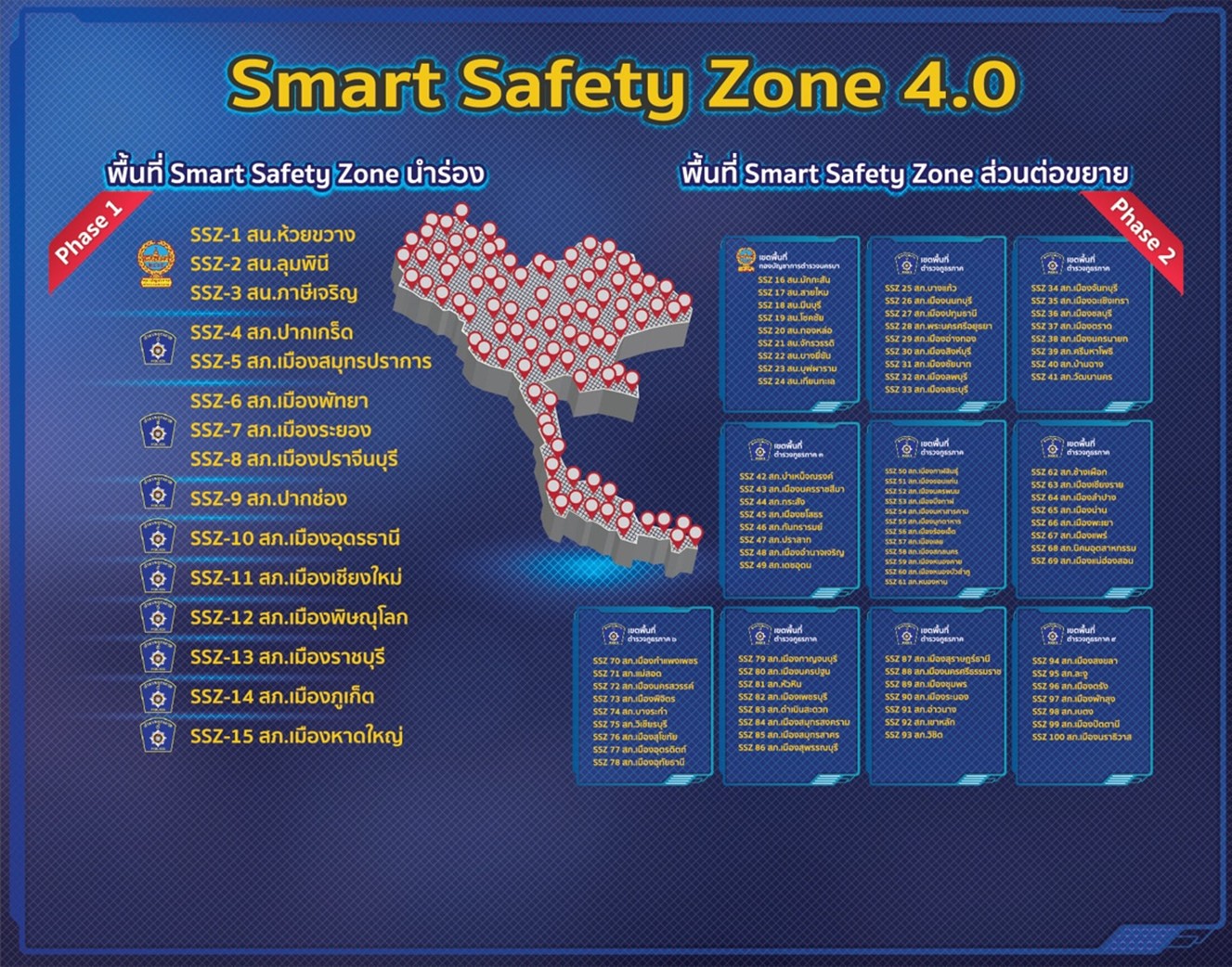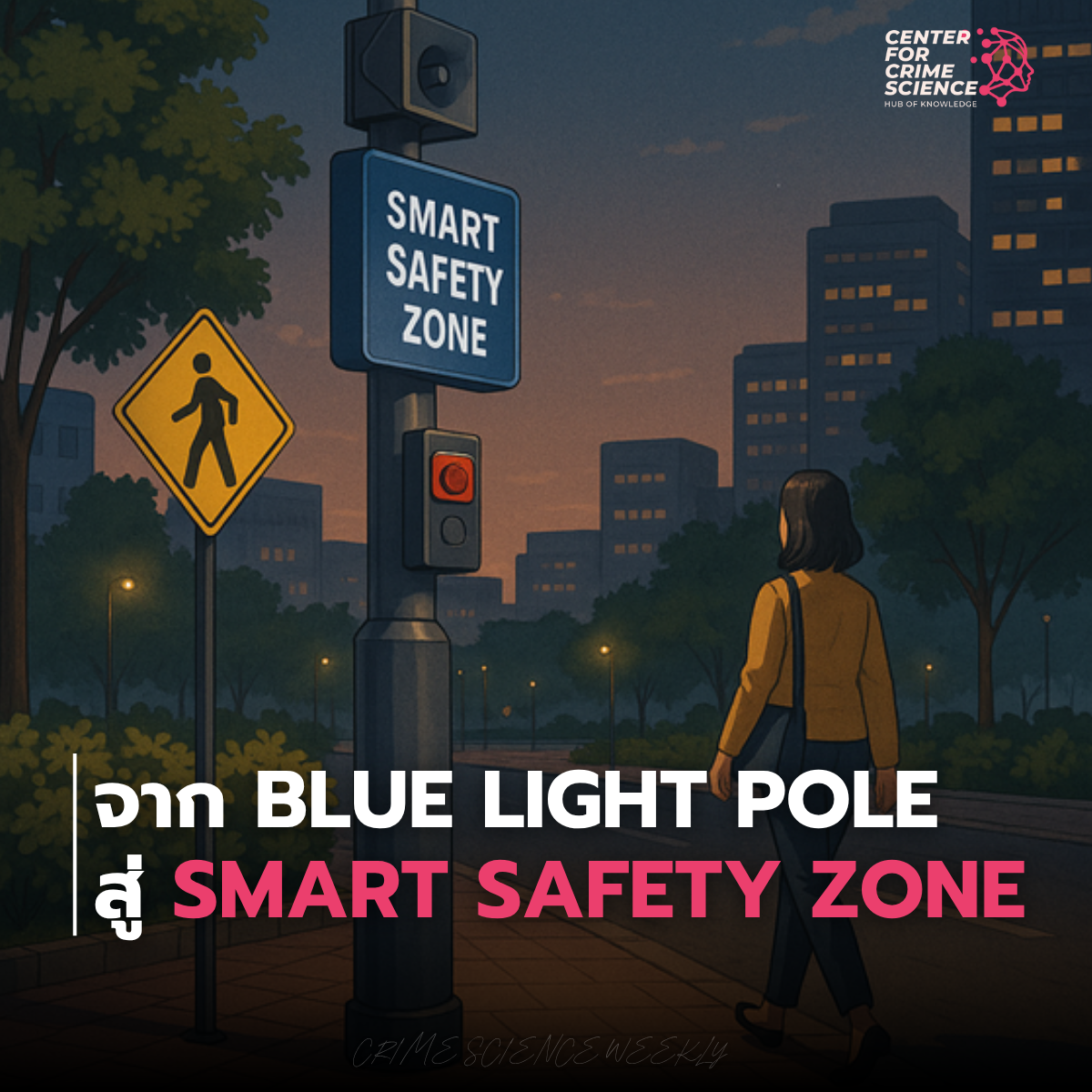From Blue Light Pole to Smart Safety Zone: A City That Knows and a Safe Society

In the nighttime of a large city, if you’ve ever walked past a smart streetlight with a rotating camera or heard announcements from a pole in the middle of the road, you might feel like you’re being watched. But in reality, these things are not created to "watch," but to "protect."
This is the core idea behind the Smart Safety Zone 4.0 project that the Royal Thai Police is pushing to implement in various areas nationwide, including Bangkok, Chiang Mai, Pattaya, Nakhon Ratchasima, and several other pilot provinces. The goal of this project is to create a Smart-Aware City that can detect, analyze, and respond to abnormalities in real-time.
From Chasing to Solving the Root Cause
Smart Safety Zone 4.0 arises from applying the concept of Problem-Oriented Policing (POP), an approach within Crime Science that shifts the role of police from "firefighters" to "problem solvers."
Herman Goldstein, the criminologist who developed this concept, suggests that police should understand the root causes of crime with a new question: “Why does this area experience recurring incidents?” instead of merely asking, “How can we catch the criminal?”
Goldstein argues that traditional policing often focuses on responding after an incident occurs—such as receiving a report, going to the scene, and making arrests. While this can help solve cases in the short term, it doesn’t address the underlying causes of crime. As long as the same conditions exist, the same crimes will happen again. Therefore, the concept of crime prevention by solving the problem is introduced, encouraging police to shift from being reactive "firefighters" to proactive "problem solvers." This means understanding how crimes occur, why they happen, and designing interventions to prevent them from recurring.
In practice, police working under this framework would start by collecting in-depth data on the area and crime behavior, such as :
- When do car thefts happen?
- Do they usually occur at night or after working hours?
- Which areas are most at risk?
- Are parking lots dark, isolated, or have frequently malfunctioning cameras?
- Who are the most common victims?
- Are they locals or newcomers unaware of the risks?
Once this data is gathered and analyzed, police can identify crime patterns and plan proactive measures, such as adding lighting in dark areas, installing CCTV cameras connected to a control center, redesigning traffic flow or parking locations to improve safety, and launching awareness campaigns to encourage community involvement in surveillance.
This is the concept of Crime Prevention Through Environmental Design (CPTED), which is part of Problem-Oriented Policing. It uses physical design to create behavioral outcomes—like how adding light makes criminals feel watched, or how using cameras and automatic alarms makes committing a crime risky and undesirable.
The Crime Triangle: When Three Factors Converge, Crime Happens
Another key framework used to analyze the causes and conditions of crime is the Crime Triangle, as explained by John Eck. According to the Crime Triangle, crime occurs not only because there is an "offender" or a "victim," but because three factors must converge at the same time:
- Offender : A person with the intention or motivation to commit a crime, such as seeking personal gain, revenge, or influenced by social circumstances that push them toward illegal behavior.
- Victim/Target : The person or property that becomes the target of the crime, such as a woman walking alone at night, a car parked in an isolated area, or a shop with poor security.
- Opportunity : The conditions that make committing a crime easier, such as a dark area with no foot traffic, broken security cameras, or lack of safety measures.
When all three elements—motive, vulnerable victims, and opportunities—align, the likelihood of a crime happening increases. However, if any one of these elements is removed or disrupted, the triangle breaks down, and the crime will not occur.
For example :
- If the offender has no motivation (e.g., through education, employment, and social support systems), the chance of committing a crime decreases.
- If the victim has protective measures (e.g., installing an alarm, using emergency apps, or knowing self-defense techniques), the offender may hesitate.
- If the environment is designed to be safer (e.g., proper lighting, functioning cameras, active patrols, and public spaces that promote visibility), the opportunity to commit a crime is reduced.
Thus, the Crime Triangle doesn’t focus on solving crime at a specific point but emphasizes a collective approach to reducing opportunities and adjusting the environment to make committing a crime more difficult or not worth the risk.
Thus, the Crime Triangle doesn’t focus on solving crime at a specific point but emphasizes a collective approach to reducing opportunities and adjusting the environment to make committing a crime more difficult or not worth the risk.
In the context of the Smart Safety Zone project, this concept is applied through environmental design and smart technologies, such as AI CCTV cameras, automatic checkpoints, real-time emergency notification apps, and community involvement in surveillance. These measures aim to eliminate one or more elements of the Crime Triangle and shift the focus from simply "catching more criminals" to "designing a safer society."

From Blue Light Pole to Smart Safety Zone
Historically, U.S. universities pioneered the concept of Blue Light Poles—streetlights equipped with emergency help buttons connected to campus security centers. These poles not only reduced response times during incidents but also made potential offenders aware that the area was being monitored.
This concept is the foundation of Situational Crime Prevention, which focuses on changing the environment to make committing crimes “harder” and people's lives “safer.”

Thailand has adapted this idea on a citywide level through Smart Safety Zone 4.0 by integrating technology with Crime Science, including:
- Smart Poles with AI cameras for analyzing images and sounds (such as arguments, calls for help, or breaking glass).
- Automated Alerts that immediately notify the police command center when an anomaly is detected.
- Emergency Speakers that allow officials to announce warnings or communicate with citizens in real-time during incidents.
- Intelligent Databases that analyze recurring events and risky behaviors to predict and prevent future incidents.
A Smart-Aware City is at the heart of the Smart Safety Zone 4.0 project. This is a city that can detect and respond to incidents promptly by combining data, technology, and citizen participation. Evaluation results from pilot areas in various provinces of Thailand—such as Lumpini, Huai Khwang, Pattaya, Chiang Mai, and Phuket—show a reduction in crime rates by 20–30% within just a few months after the installation of smart surveillance systems and improvements to the environment.
However, the most significant result is not the statistics but the increased sense of safety among citizens. Local residents in the pilot areas feel cared for, knowing that they are being protected, not by intrusive surveillance, but by a system that can respond and protect them quickly when unexpected events occur. Trust between the community and police is gradually being rebuilt based on data, transparency, and friendly communication.
From Crime Control to Crime Science Thinking
When viewing a city through the lens of Crime Science, it becomes clear that the safety of a city is not just about luck or increased legal penalties. It is the result of evidence-based design that uses technology and studies of human behavior to reduce opportunities for crime—such as installing well-lit walkways to reduce crime hotspots, using smart streetlights with cameras and emergency buttons to increase public vigilance, and employing predictive analytics to forecast and prevent crime risks before they happen.

Source : Facebook Smart Safety Zone
Currently, the Smart Safety Zone 4.0 project has expanded to over 200 areas nationwide, both in urban and rural areas. Each area develops a Smart Safety Zone model tailored to its specific context. For example, community markets use camera networks from local shops and neighborhoods, tourist areas focus on alert systems and emergency gathering points, and residential neighborhoods connect with citizens’ smartphones for real-time notifications and communication with operations centers.
In the future, the goal of Smart Safety Zone is to expand from pilot areas to encompass the entire city, creating an intelligent surveillance system that works seamlessly at both local and national levels. A city with real-time data that continuously processes risk assessments will not only be safer but will also be a city that is aware—a city that understands human behavior, sees early signs of risk, and responds in time.
The evolution from Blue Light Poles to Smart Safety Zones represents a journey from emergency help signals to a society where the whole community works together to prevent crime. It is a direction that the Center for Crime Science is advancing through research, training, and evidence-based policy design.
With the power of knowledge and cooperation, we are getting closer to a society where "committing a crime is hard, and living safely is the norm."
References
- Matichon Weekly, 2022. Smart Safety Zone 4.0: Safe Communities, Smart Cities. https://www.matichon.co.th/weekly/column/article_547812
- Parliamentary Library (n.d.), Smart Safety Zone 4.0 Project. https://library.parliament.go.th/th/radioscript-rr2565-jan1
- Cohen, L., & Felson, M. (1979). Social Change and Crime Rate Trends: A Routine Activity Approach. American Sociological Review, 44(4), 588–608.
- Clarke, R. V. (1997). Situational Crime Prevention: Successful Case Studies.
- Eck, J. (2003). Police Problems: The Problem-Oriented Guide to the Crime Triangle.







